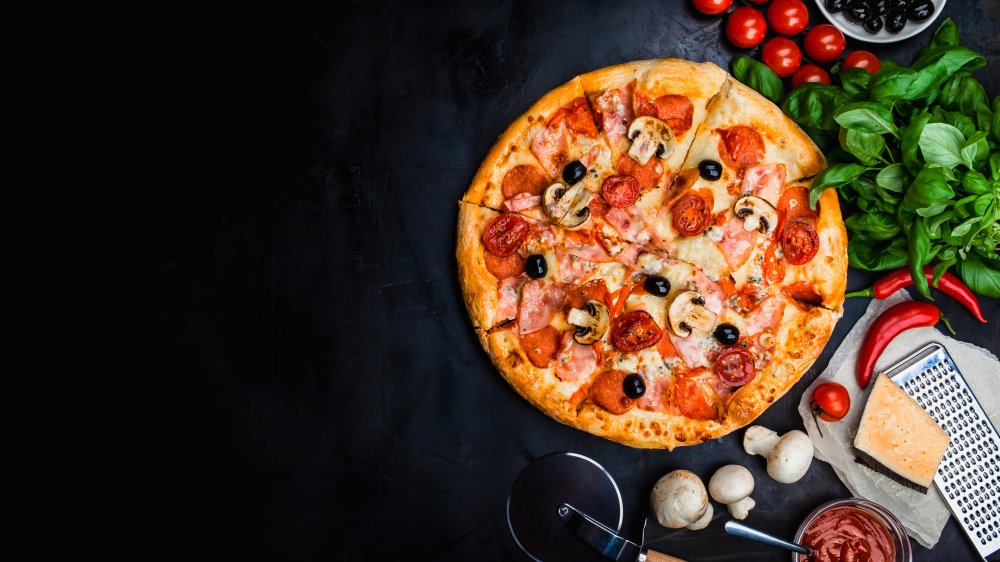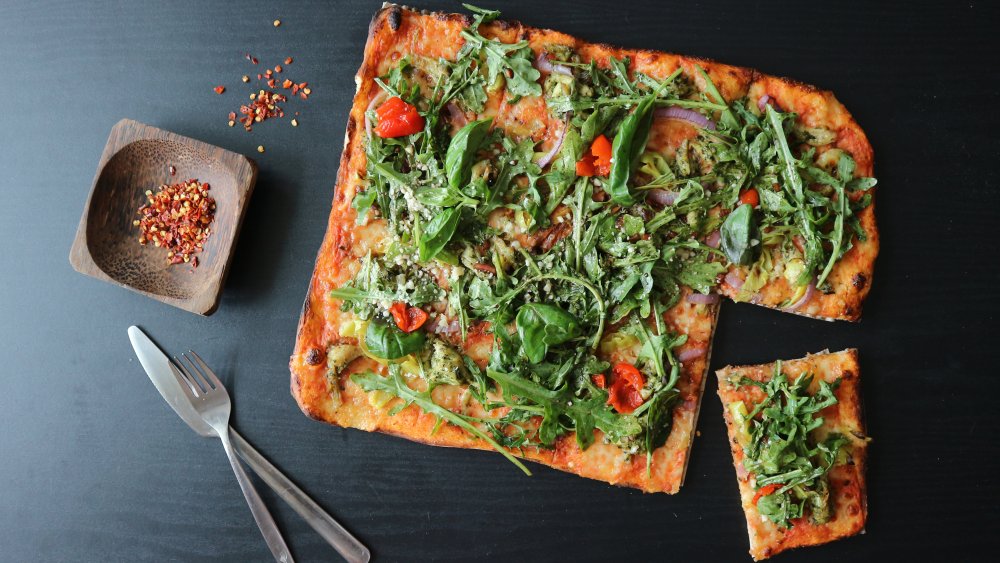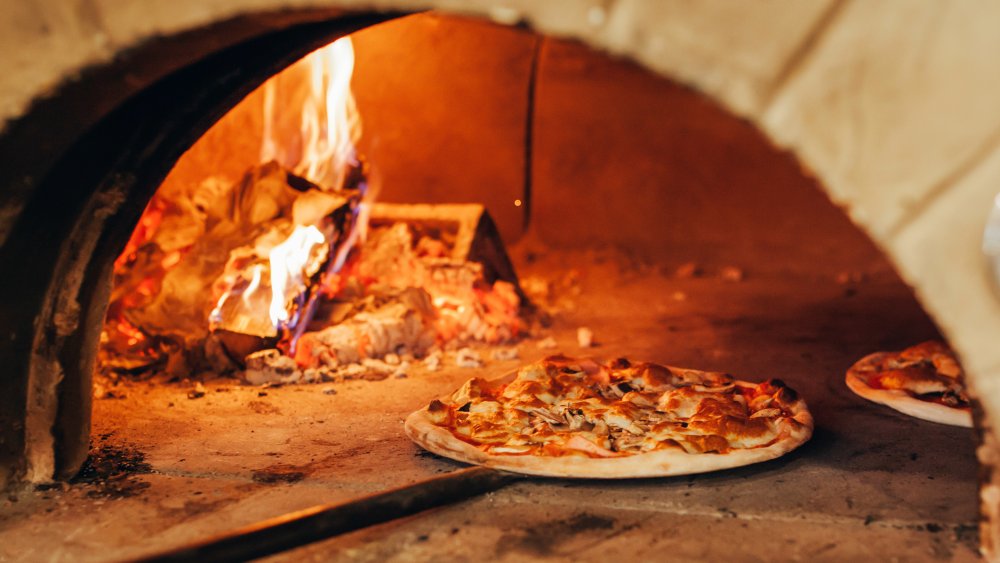The Real Difference Between Cheap And Expensive Pizza
Though the beloved pizza has its origins in Italy, many countries around the world have their own take on the dish. No matter where you are on the planet, chances are you're not too far from an establishment that would be happy to sell you a pizza.
Typically, pizza is thought of as a cousin of fast food. It's cheap and tasty, reliable and comforting, though probably not the healthiest meal you can have (via CNN). Most of us are used to pizza chains such as Little Caesar's, Papa John's, and Domino's. If you go to your neighborhood Domino's to take home a pizza, your topping options are going to be a bit limited. Standards such as sausage, pepperoni, and canned pineapple will certainly be available but there's a limit to what you can get when you're spending $5.99 for a pizza. But it's not just limited toppings that allow pizzas to be sold on the cheap. Little Caesar's, for example, saves costs on cheese and passes those savings along to the customer. Instead of using fresh mozzarella cheese, the chain uses pre-shredded low moisture mozzarella which lasts longer on the shelf (via Doctor Oz).
The difference between a cheap and expensive pizza is all in the ingredients
If you feel like going to the next step up with slightly fancier toppings such as kalamata black olives, anchovies, arugula, and prosciutto di parma, you will likely have to spring for a handcrafted pizza which can be had for anywhere from $10-$30. This middle price range of pizzas can typically be found at places like your local Italian restaurant. At this type of restaurant, the dough is usually a bit thinner and crunchier compared to the thick and spongy dough you might be used to when it comes to takeout (via AK Crust). Part of this can be attributed to the type of dough used. Many takeout pizza restaurants use industrial flour to make their dough, whereas if you go to an independent restaurant and shell out a few more dollars you're likely to have a dough made with premium flour without additives or bleaches. These flours can often have a delightful nutty taste as well (via the Pittsburgh Post Gazette).
On top of that, the pizza at this type of restaurant is much more likely to be wood-fired, which imparts a wonderfully smokey flavor. If you're out dining with children, letting them watch the pizza dough be thrown in the air and then go in and out of the oven is a great way to keep them occupied.
The gold standard of expensive pizza
The beauty of pizza is that it's a blank canvas. This allows the chef to put whatever he wants on top, and this freedom has led to some pretty creative and pricy combinations.
This artistic liberty is what has allowed the New York City restaurant Industry Kitchen to develop the Guinness World Record 24K pizza, which retails for a cool $2,000. Topped with Stilton cheese, foie gras, platinum Ossetra caviar, truffle, and 24 karat gold leaves, this concoction is the very definition of "over the top" and the restaurant requires that it be ordered at least 48 hours in advance.
This pie is expensive for the shock factor — having a pizza arrive to your table coated in a precious metal is a pretty impressive way to start your meal. But if you're willing to give up a couple of the luxury ingredients, you might be able to find a foie gras pizza out there that won't force you to refinance your home.


